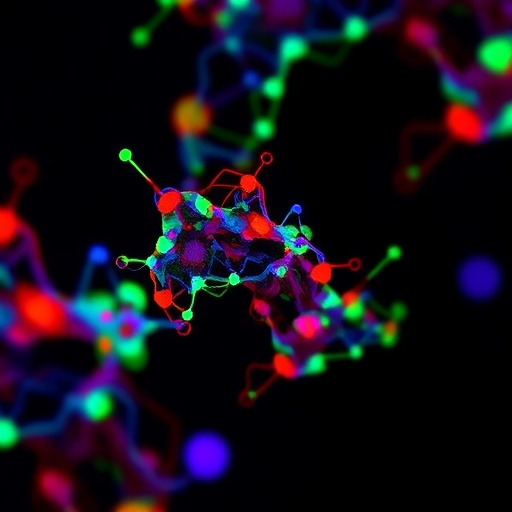In recent years, the quest for reliable and non-invasive markers to diagnose, monitor, and prognosticate liver diseases has intensified, culminating in the identification of Chitinase-3-like protein 1 (CHI3L1) as a groundbreaking biomarker. CHI3L1 belongs to the glycoside hydrolase family 18 but intriguingly lacks enzymatic activity, differentiating it from conventional hydrolases. Despite this, it is known for its adeptness in ligand binding, influencing a spectrum of complex pathophysiological mechanisms. This unique profile positions CHI3L1 at the crossroads of cell proliferation, inflammatory response, fibrotic remodeling, and oncogenesis within hepatic tissues.
Liver disease remains a formidable global health burden. Conditions such as hepatitis-induced fibrosis, non-alcoholic fatty liver disease (NAFLD), alcoholic liver disease (ALD), and hepatocellular carcinoma (HCC) collectively account for extensive morbidity and mortality worldwide. Traditional diagnostic modalities, notably liver biopsy, while considered the gold standard, suffer from significant drawbacks including invasiveness, sampling error, and patient discomfort. The emergent paradigm shift toward serum biomarkers opens avenues for less invasive, repeatable, and dynamic assessment of liver pathology. CHI3L1’s ability to reflect the state of hepatic fibrosis and inflammation has thus garnered intense research interest.
Elevated circulating levels of CHI3L1 have been correlated robustly with the severity of hepatic fibrosis, especially in chronic viral hepatitis contexts such as chronic hepatitis B (CHB) and chronic hepatitis C (CHC). Comparative analyses have revealed that CHI3L1 surpasses conventional serum markers like hyaluronic acid (HA) and the Fibrosis-4 (FIB-4) index in diagnostic accuracy for fibrosis staging. These findings underscore CHI3L1 as a promising candidate for non-invasive fibrosis evaluation. Additionally, this marker’s dynamic range permits nuanced tracking of fibrosis progression or regression over time, augmenting its clinical utility.
Beyond static diagnosis, CHI3L1 exhibits pronounced potential as a biomarker to monitor therapeutic efficacy, notably antiviral regimens. The protein’s serum concentrations correspond proportionally with fibrosis stage; thus, changes in CHI3L1 levels provide real-time insights into the liver’s response to treatment. This realignment of biomarker use—from purely diagnostic to active disease monitoring—heralds a transformative approach to managing chronic liver conditions, wherein patient-tailored interventions can be fine-tuned based on biomolecular feedback.
Further expanding its clinical relevance, CHI3L1 demonstrates capacity to discriminate between benign hepatic steatosis and non-alcoholic steatohepatitis (NASH). This distinction is pivotal, as NASH is a progressive and potentially oncogenic condition characterized by hepatocellular injury, inflammation, and fibrosis, whereas simple steatosis remains relatively benign. Accurate differentiation via CHI3L1 levels could facilitate early intervention strategies, forestalling progression to cirrhosis or hepatocellular carcinoma.
Strategically combining CHI3L1 with other serum markers amplifies diagnostic precision. Incorporation with alpha-fetoprotein (AFP), platelet counts, and other fibrosis indices have proven especially efficacious in detecting significant and advanced fibrosis stages. This multifaceted biomarker matrix strengthens clinical decision-making frameworks, facilitating early identification of high-risk patients and enabling timely therapeutic escalation.
Hepatocellular carcinoma, a lethal sequela of chronic liver disease, is another domain where CHI3L1 has shown remarkable prognostic significance. Elevated CHI3L1 levels have been linked with poorer survival outcomes, particularly following curative hepatic resections. When considered alongside AFP, CHI3L1 enhances early detection accuracy for HCC, offering clinicians a dual-marker system that surpasses the sensitivity and specificity of either marker alone. This synergistic diagnostic approach promises improved surveillance and risk stratification in at-risk populations.
On a mechanistic level, CHI3L1 functions as a pivotal regulator of fibrogenesis and inflammatory pathways. By modulating macrophage activity, hepatic stellate cell proliferation, and extracellular matrix deposition, CHI3L1 actively shapes the hepatic microenvironment favoring fibrosis and tumorigenesis. Targeting these molecular interactions may unlock new therapeutic strategies aimed at halting or reversing liver disease progression. As such, CHI3L1 transcends its utility as a biomarker, emerging as a viable target for pharmacological intervention.
Current research delves deeper into the molecular cascades influenced by CHI3L1. Detailed elucidation of its receptor interactions, downstream signaling pathways such as MAPK and PI3K/AKT, and crosstalk with inflammatory cytokines will refine our understanding of liver pathobiology. This knowledge will be instrumental in designing inhibitors or modulators of CHI3L1 activity, potentially yielding novel antifibrotic and anticancer drugs tailored to liver disease patients.
Clinically, integrating CHI3L1 assessments into routine workflows could revolutionize patient management paradigms. Non-invasive CHI3L1 measurements would enable serial monitoring of disease course, early detection of fibrosis exacerbation, and timely adjustment of therapeutic regimens. This biomarker-driven, precision medicine approach promises to enhance patient outcomes, reduce reliance on invasive biopsies, and optimize resource utilization in hepatology practice.
Moreover, the prognostic implications of CHI3L1 extend beyond liver diseases. Emerging evidence from oncology and immunology suggests that its expression impacts tumor microenvironments and systemic inflammatory states, potentially linking CHI3L1 to broader pathological contexts. This cross-disciplinary relevance underscores the translational potential of CHI3L1-centered research and may stimulate novel investigations into diverse chronic diseases involving fibrosis and inflammation.
In summary, the identification and characterization of CHI3L1 as a multifunctional biomarker and regulator in liver diseases mark a significant advance in hepatology. Its diagnostic, prognostic, and therapeutic implications portend a new chapter in managing chronic liver conditions and HCC. Ongoing and future studies will further clarify its mechanistic roles, refine its clinical applications, and possibly introduce targeted therapies that leverage its biological functions. The integration of CHI3L1 into personalized medicine algorithms exemplifies the cutting edge of translational biomedical research, with tangible benefits for millions affected by liver ailments globally.
Subject of Research: Chitinase-3-like protein 1 (CHI3L1) as a biomarker and therapeutic target in liver diseases
Article Title: Role of chitinase-3-like protein 1 in liver diseases: A comprehensive review
News Publication Date: 2025
References:
Chao Tian, Shizhou Deng, Ming Yang, Baochen Bai, Lai Wei, Role of chitinase-3-like protein 1 in liver diseases: A comprehensive review, Genes & Diseases, Volume 12, Issue 6, 2025, 101653
Image Credits: Genes & Diseases
Keywords: Cancer genetics, Liver fibrosis, Biomarkers, Hepatocellular carcinoma, Non-alcoholic steatohepatitis, Chronic hepatitis B, Chronic hepatitis C, Antiviral therapy monitoring, Fibrosis progression, Inflammation, Molecular targets




